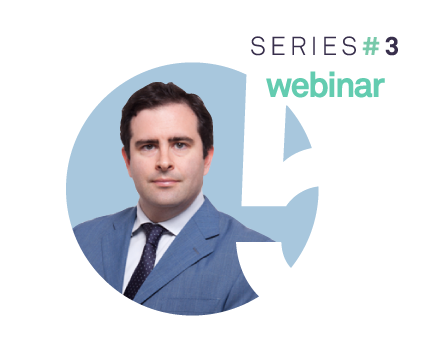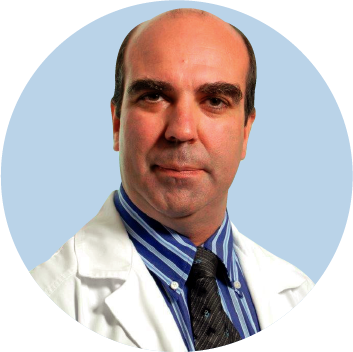- /
- ASP Web Summit
- /
- Webinars Series #3 – Circular...
ASP 2022 Webinar series on
“Circular Economy in Medical Devices reprocessing: a roadmap for new solutions”
General Announcement
Every day, tons of healthcare waste are produced worldwide, aggravating the health of our planet. Combined with new forms of waste related to the pandemic, this reality is seriously compromising the quality of living beings.
As responsible for this, we must act to change it. We must move towards a Circular Economy – renew, remake, share – instead of a linear economy – take, make, dispose.
New design strategies can be adopted to implement Circular Economy in the healthcare
Servitization is an important strategy in the implementation of a Circular Economy, transforming all aspects, from design to delivery, transportation and recycling.10
Due to Healthcare-associated infections, lower costs of acquisition, and no reprocessing, a recent trend toward the use of single-use MD has been observed.11 However, this strategy of single-use is not in line with a Circular Economy. Alternative reprocessing methods, namely low temperature instead of steam, could improve efficiency.12
Unsolved issues related to externalization of medical device reprocessing with its pros and cons do require a judicious evaluation through Health Technology Assessments.13
To that end, we are proud to be focusing on the role of Medical Device reprocessing as a circular economy solution.
By Dr. Carlos Palos
SCIENTIFIC DIRECTOR

Lindsey Wuisan

Jeremy Faludi

Victoria McCreanor

May Karam

Jonathan Hart

INFECTION CONTROL & ANTIMICROBIAL STEWARDSHIP
LISBON, PORTUGAL

Lindsey Wuisan
Expert on Circular Economy, Environmental Policy and Management
Circular Economy Lisbon, Portugal
SYNOPSIS:
During the first webinar, Lindsey Wuisan (MSc, NL/PT) will kick-off the series by giving a general overview of Circular Economy (CE) and the opportunities for the healthcare sector. The presentation will start with the environmental imperative and an introduction to the concept and main principles. Furthermore, key strategies to implement CE in practice will be presented as well as the opportunities (and risks) for the healthcare sector. Lastly, inspiring examples of circular initiatives in the healthcare sector will be shared.
DATE: 25th of May
You can see factsheet & recording

QUESTIONS:
- Do healthcare institutions have ambitious sustainability policies that address waste prevention, reuse, and optimal recycling (less incineration)?
- Do healthcare institutions actively promote and implement reusable medical devices?
- Which measures are already (successfully) applied in healthcare institutions?
- What are the main barriers to a circular economy in the healthcare sector?

Jeremy Faludi
Assistant Professor of Sustainable Design Engineering
TU Delft, Netherlands
SYNOPSIS:
Medical Device industry values safety, as it should. But throwing away entire products just to avoid cleaning them creates air pollution, water pollution, and other waste that damages people’s health.
Don’t just treat the patient in the room, treat the other 8 billion patients in the world as well.
DATE: 23rd of June

QUESTIONS:
- Is circularity being applied today?
- What’s the biggest environmental impact of an electrophysiological diagnostic catheter?
- What is the Impact per functional unit of a SUD vs RMD?

Victoria McCreanor
Health Economics Research Fellow
Greater Brisbane, Australia
SYNOPSIS:
When considering which sterilizer is right for a particular setting, there is more to think about than the up-front costs of the sterilizer system itself. Concepts used in health economic evaluation can be used to assess the longer term costs and benefits of different options, including environmental considerations, in different settings. This webinar will cover an overview of health economic evaluation concepts, factors related to the sterilizer system, the instruments/devices being sterilized and wrap up with how to bring it all together.
DATE: 22th of September

QUESTIONS:
- What is the knowledge of health economics?
- What to consider: as Healthcare is very expensive nowadays, we can only invest in new technology if it saves costs, or Health outcomes are the most important?
- Which factors are most important when thinking about the costs of reprocessing medical devices?
- Which factors are most important when thinking about the carbon footprint of reprocessing medical devices?

May Karam
EORNA President Infirmière de bloc Opératoire Diplômée D'etat (IBODE)
Paris, France
SYNOPSIS:
We have to be aware of the importance of having to preserve our environment.
It is time to change our working methods including in the healthcare sector to reduce the carbon footprint and preserve our planet.
Sterilization and the Operating Room are side-by-side when it comes to Patient Safety. One does not work without the other and both are critical in a hospital.
In general, large hospitals have their own sterilization department. There are also outside facilities that provide this service and work as a sterilization department.
Would it be interesting to have a sterilization service onsite, close to the operating room and the health care services, or to outsource this service to facilities far away from the hospital?
The question is not new and both solutions have advantages and disadvantages because we must take into account the economic aspect, the modalities to continue to ensure safe and quality patient care. But let’s not forget that the issue is not only about organization and the place where the MD reprocessing will be done. It becomes imperative to pay attention to avoid waste, to adapt our methods in the operating room and in the sterilization department and to work in a circular economy perspective, for the patient, the health system, and for our Planet.
DATE: 27th of October

QUESTIONS:
- Which department is more critical for the MD Reprocessing?
- Which models of MD Reprocessing do we found in a hospital?
- What are the disavantages of the Off-site CSSD?
- In what areas must institutions invest for the Circular Economy?

Jonathan Hart
Biomedical Engineer at Direzione Sanitaria Campus Bio-medico, Rome
Roma, Itália
SYNOPSIS:
As waste management, pollution and climate change are global issues at all levels, circular economy is, for all sectors including healthcare, a necessary solution and an opportunity for sustainability. The success of circular economy models in healthcare requires, in order to be developed and adopted, a joint effort on the part of the industry, policymakers and users.

QUESTIONS:
- How can HTA contribute to Healthcare Circular Economy?
- Why is circular economy necessary in the healthcare industry?
- In the adoption of circular economy solutions in healthcare, what counts most?
- Which organizational aspect is more important in the management of reusable medical devices?
References :
1. Pichler P, Jaccard IS, Weisz U, Weisz H. International comparison of health care carbon footprints. Environ Res Lett. 14(6):064004. 7.
2. Health Care Without Harm, Arup. Health care’s climate footprint. Health Care Without Harm; 2019.
3. Global analysis of healthcare waste in the context of COVID-19: status, impacts and recommendations. Geneva: World Health Organization; 2022. License: (CC BY-NC-SA 3.0 IGO).
4. Benson NU, Bassey DE, Palanisami T. COVID pollution: impact of COVID-19 pandemic on global plastic waste footprint. Heliyon. 7(2):e06343.
5. https://www.who.int/news-room/fact-sheets/detail/health-care-waste.
6. BMJ 2021;375:n2734 http://dx.doi.org/10.1136/bmj.n2734
7. https://ellenmacarthurfoundation.org/topics/circular-economy-introduction/overview
8. WHO Europe. Circular Economy and Health: opportunities and risks. Geneva, 2018.
9. G.M. Kane, C.A. Bakker, A.R. Balkenende. Towards design strategies for circular medical products. Resources, Conservation and Recycling, Volume 135, 2018, Pages 38-47, https://doi.org/10.1016/j.resconrec.2017.07.030)
10. Andrea J. MacNeill, et al. Transforming The Medical Device Industry: Road Map To A Circular Economy. Health Affairs, doi.org/10.1377/hlthaff.2020.01118
11. Ciocîrlan M. (2019). Low-cost disposable endoscope: pros and cons. Endoscopy international open, 7(9), E1184–E1186. https://doi.org/10.1055/a-0959-6003
12. McCreanor, V., & Graves, N. (2017). An economic analysis of the benefits of sterilizing medical instruments in low-temperature systems instead of steam. American journal of infection control, 45(7), 756–760. https://doi.org/10.1016/j.ajic.2017.02.026
13. HTA 101: Introduction to Health Technology Assessment. https://www.nlm.nih.gov/nichsr/hta101/ta10103.html




